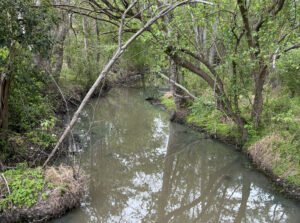News
Safe Water: A Mom's Quest for Safe Fun On Our Waterways
Posted on June 28th, 2017
 By Heather Deck, Pamlico-Tar Riverkeeper
By Heather Deck, Pamlico-Tar Riverkeeper
I have always enjoyed swimming in lakes, rivers and streams and have done so since my youth during our annual family camping trips. Now, I love to see the joy on my children’s faces as they do the same. As a mother, you want your children to be happy, experience new things, and enjoy the outdoors. If you’re like me, you also worry about their safety and health – that’s where the power of information can come in handy. As your Pamlico-Tar Riverkeeper, every summer I am asked, “would you let your kids swim in the river today?” The answer can be yes and no, depending on a number of factors.
Thousands like me enjoy the Neuse and Tar-Pamlico Rivers in the same way each summer. Not a spring and summer weekend day goes by when we don’t see hundreds out on the water tubing, skiing, swimming, sailing, paddling, and even diving. Water sports are just some of the many benefits a river provides. The river offers us a place for recreation, relaxation, and a way to cool down during our steamy North Carolina summers.
As a child, it never crossed my mind to be concerned about the quality of the water I was swimming in and whether or not it was safe to do so. As a mother and a Riverkeeper, that is something I am aware of and I look to certain resources and guidelines to make sure our family has a fun and safe day on the water.
Swimming in the Neuse and Tar-Pam, Is it Safe?
The information we have currently leads us to believe that it is safe to swim in the rivers the majority of the time. There are definitely instances, however, when one should not risk swimming in the river or its creeks, including when swim advisories are issued for harmful algal blooms or bacteria.
The rivers continue to suffer from nutrient pollution that at times, especially during the summer months of June-September, lead to algal blooms and fish kills. During such events, it is strongly advised that contact with the water be avoided.
It is rare, but there are times in the Neuse and Pamlico Rivers when a harmful algal bloom (HAB) has been present. A HAB may release a toxin that could impair your health or that of your children or pets. Most algal blooms are not toxic, but since water testing is irregular, Sound Rivers and health professionals recommend that people avoid primary contact with waters where an algal bloom is present. Once a HAB is detected, a swim advisory may be issued by the state. However, conditions can change so rapidly on our coastal rivers (within 12 hours even) that it is important to avoid waters where you suspect an algal bloom may be occurring.
The Neuse and Tar-Pamlico Rivers host a wide array of different types of algae. During certain conditions (heat, nutrients and calm waters) algae will multiply (bloom) causing waters to be discolored and even at times green or blue (from the algae known as blue-greens.) The Chowan River is already exhibiting signs of algal blooms this year. We may expect to see similar blooms in the Pamlico and Neuse estuaries this summer.
In addition to algal blooms, bacterial contamination is another top concern regarding public health and safety while swimming or engaging in other recreation that leads to contact with the water. There are locations that are more likely to have bacterial contamination issues, especially during and after rainstorms. The most recent large storm event for our area, on April 26th, showed large increases in bacterial counts in sampled waters. Within one week, the bacteria numbers returned to safe levels. Urban areas have numerous pipes that drain the streets, parking lots, businesses, etc. In addition, urban areas house more pets that can also result in higher bacteria counts in stormwater runoff. Sewer spills are most likely to occur during heavy rains. If a sewer spill does occur, utility officials are required to notify the public within 48 hours.
Climate change is making heavy intense downpours, droughts and rising water temperatures more common. This can alter the quality of our recreational water. Bacteria and viruses thrive in these new conditions and when they come into contact with humans and pets, can cause numerous illnesses.
Monitored Waters
The Division of Environmental Health does routinely monitor swim beaches in the Neuse and Pamlico Rivers. The swim beach at Goose Creek State Park is one example. However, these waters are not sampled every day, but only once every two weeks. If bacteria levels are found to be high, then the state would issue a swim advisory. The waters upstream of Washington and New Bern are not regularly monitored for bacteria pollution. To find out if the state monitors your favorite swim beach, go to: www.theswimguide.org.
Generally speaking, the Neuse and Tar-Pamlico Rivers and their tributaries are safe for recreational use. However, there are times that avoiding the water is warranted, when the risk of exposure to bacteria and other pollution greatly increases.
Sound Rivers will continue working with numerous state and federal partners to address this region’s’ needs for improved monitoring, awareness, and coordination necessary to maintain swimmable waters. As your Riverkeeper, but also as a mom, I will monitor the water before I jump in. But you better believe my children and I will be jumping in on a 100-degree day! Having a refuge from the summer’s heat is a right all citizens should be able to enjoy.
Safe Swimming Guidelines: When to skip the Water and Wait for a Better Day
- You notice an active fish kill, or remnants of fish kill
- An Algal bloom that is visible (water looks green)
- Swimming advisories are issued by the state or local government
- You have an open wound – best to wait until it heals
- A significant (½ inch or more) rainstorm after periods of dry weather, for first 2-3 days
- Flooding or high water. Heavy rains and flooding can typically lead to sewer overflows and urban areas are especially susceptible to this. (Not to mention high flows are really dangerous!)
- If you come into contact with an algal bloom, wash thoroughly. Do the same for your pets with clean water. (It’s always a good idea to rinse off with clean water after coming out of the river.)
- If your child or family member appears ill after being in waters with an algal bloom, seek medical care immediately.(Remember, this is a very rare occurrence)
- If your pet appears to stumble, stagger or collapse after being in natural waterbodies, seek veterinary care immediately.
Related News
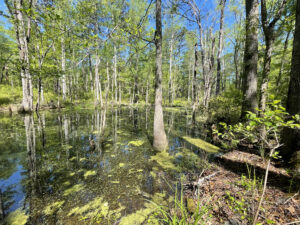
Tell NC to restore wetlands protections!
April 19th 2024
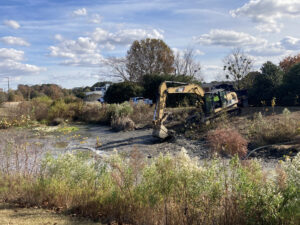
Position available: Stormwater Education Coordinator
April 18th 2024
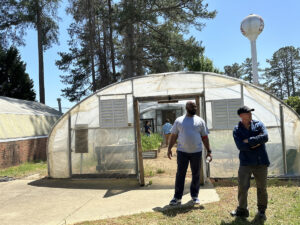
Southern Nash next in line for stormwater projects
April 18th 2024
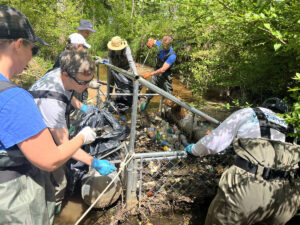
Xylem, Sound Rivers team up for cleanup
April 18th 2024

Sound Rivers launches new podcast
April 18th 2024
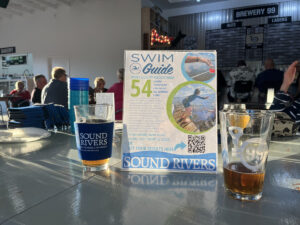
Swim Guide gearing up for a seventh season
April 11th 2024

Feedback needed for Jack’s Creek plans, projects
April 11th 2024

Pamlico-Tar Riverkeeper talks water quality
April 11th 2024
